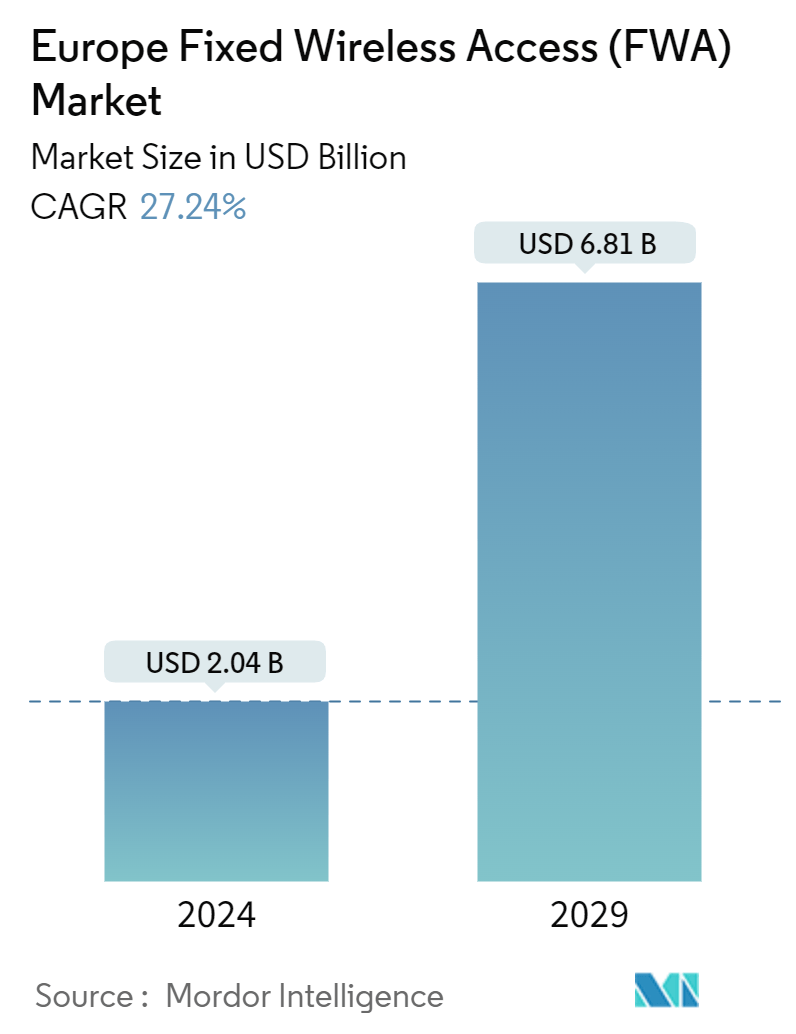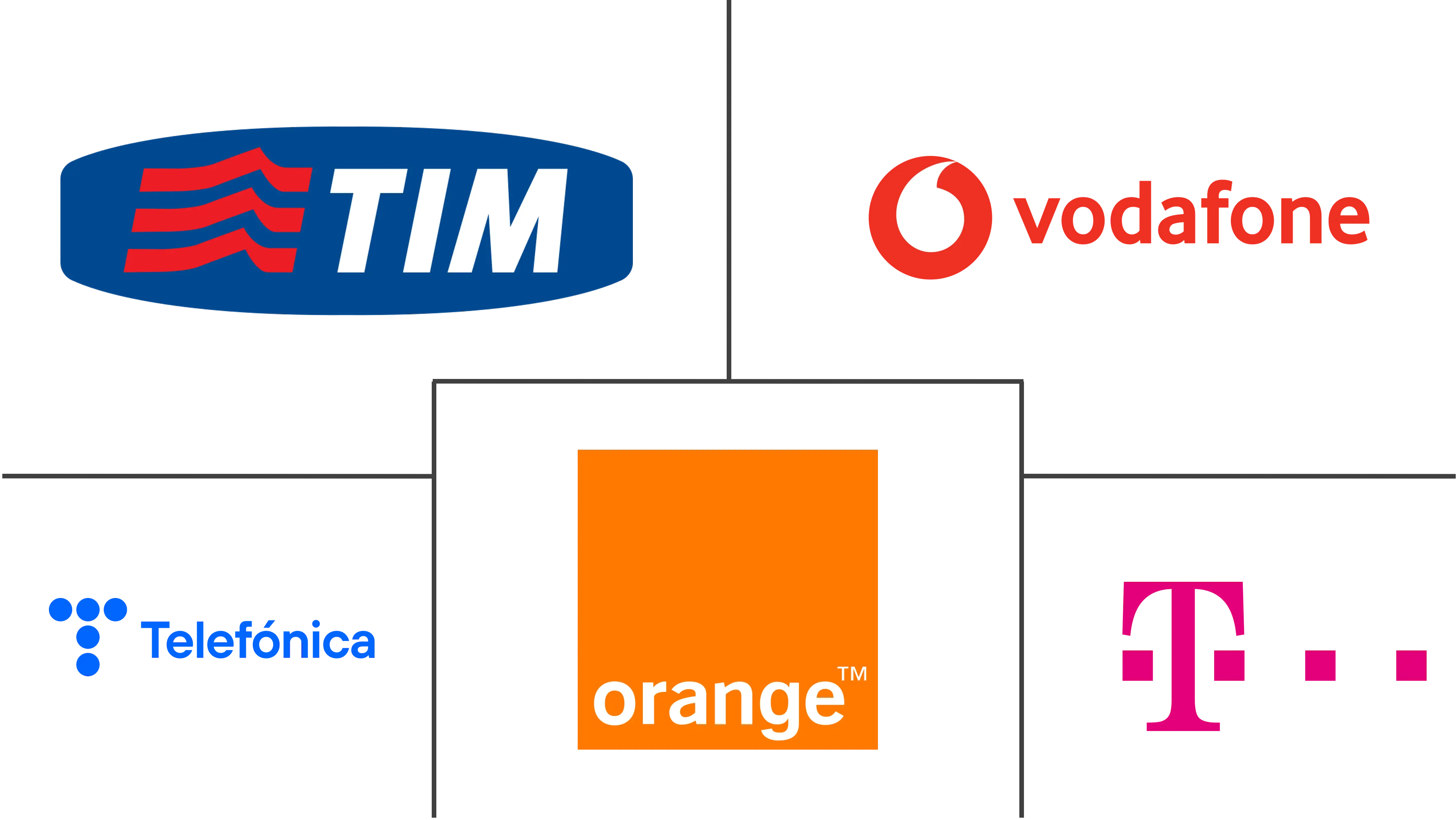Market Size of Europe Fixed Wireless Access (FWA) Industry

| Study Period | 2019 - 2029 |
| Base Year For Estimation | 2023 |
| Market Size (2024) | USD 2.04 Billion |
| Market Size (2029) | USD 6.81 Billion |
| CAGR (2024 - 2029) | 27.24 % |
| Market Concentration | Low |
Major Players
*Disclaimer: Major Players sorted in no particular order |
Europe Fixed Wireless Access (FWA) Market Analysis
The Europe Fixed Wireless Access Market size is estimated at USD 2.04 billion in 2024, and is expected to reach USD 6.81 billion by 2029, growing at a CAGR of 27.24% during the forecast period (2024-2029).
- In Europe, fixed wireless access (FWA) is gaining traction, delivering broadband solutions via wireless technologies, especially targeting rural and underserved regions. The advent of 5G has accelerated FWA's uptake, helping bridge the digital divide and bolster connectivity throughout Europe. By harnessing mobile networks, FWA offers a high-speed internet alternative to conventional wired broadband.
- The surging demand for high-speed data in both residential and enterprise industries propels FWA's growth. Europe's commitment to digitalization underscores the necessity for swift and dependable internet, particularly in its rural and underserved locales. Viewed as a cost-effective means to bridge the digital chasm, FWA's appeal is further amplified by 5G's promise of quicker, more stable connections, benefiting both urban and rural adopters.
- A pivotal trend steering FWA's ascent in Europe is the concerted effort to link rural and remote locales, often devoid of standard broadband. In response, European governments have rolled out initiatives and subsidies to bolster internet access in these hard-to-reach areas. FWA's advantage lies in its ability to deliver services sans the extensive deployment of fiber or copper, presenting a pragmatic approach to connect these communities.
- The expansive rollout of 5G technology across Europe is acting as a catalyst for the FWA market. Boasting high bandwidth and minimal latency, 5G is adept at supporting numerous devices and offering rapid internet speeds, making it a prime candidate for FWA applications. Acknowledging this synergy, numerous European telecom operators are keenly integrating 5G into their FWA offerings, especially in locales where establishing fiber infrastructure is either lacking or comes at a steep price.
- While residential demand predominantly fuels FWA's growth, the enterprise industry is emerging as a significant player. Businesses, particularly those in remote areas, are increasingly turning to FWA to ensure uninterrupted operations. This trend is especially evident in sectors like agriculture, manufacturing, and logistics, where swift and reliable internet is paramount for digital evolution and operational success.
- However, the European FWA landscape has its challenges. A primary concern is achieving network stability and scalability. Despite 5G's enhancements in speed and reliability, issues like network congestion can surface, particularly in bustling urban centers or peak usage times. Furthermore, certain regions grapple with modernizing their existing infrastructure to accommodate a broader FWA rollout, a hurdle that could temper the market's expansion.

